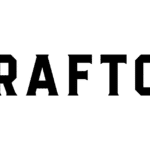As the US advertising landscape continues its transformation, a few key sectors are fueling impressive growth. Connected TV (CTV), retail media, social platforms, and search engines are playing pivotal roles in driving ad spend, which is outpacing the country’s GDP. A recent analysis of the market reveals that US media ad spend is expected to grow at nearly 9% annually from 2019 to 2028, dwarfing the 3.9% GDP growth over the same period. This data comes from trusted sources like the International Monetary Fund and the Congressional Budget Office, revealed by eMarketer, underscoring a significant trend: digital ad spending has broken free from traditional GDP-tied advertising norms, shifting the dynamics of the industry.
Paul Verna, an expert analyst and co-author of the “Ad Spending Benchmarks: Q3 2024” report, highlights this shift. “What we’re seeing now is a vibrant digital space driving growth that was never achieved by traditional media,” he explains. Unlike the days when advertising primarily centered on industries directly linked to GDP growth, such as automotive or travel, today’s digital ad spend encompasses a wide array of industries, particularly those focused on services. This shift is especially pronounced in CTV, where the audience demographics and platforms are reshaping the future of advertising.
Social media advertising, led by Meta’s platforms, continues to grow at a similar pace to search, with Instagram being the primary driver. Despite the uncertainties surrounding TikTok’s future in the US, its influence on both ad spend and culture is undeniable. TikTok is transforming the way users engage with social platforms, and its impact is spilling over into the broader social ecosystem, particularly in the creator economy. As Verna notes, “There’s a tight connection between the social and creator spaces, which is fueling significant ad spend growth.”
Social media’s rise is also driving changes in the search landscape, especially among younger users. Platforms like TikTok are becoming search tools in their own right, particularly for Gen Z, who regularly use the platform to find information rather than traditional search engines. While search remains a key area of ad spend, thanks to its strong foundation in search engine ads, there are emerging disruptions in the space that could shift how search is monetized in the future.
Connected TV has emerged as a powerhouse in the ad industry, with its ad spend projected to grow at an impressive 10% annually through 2027. CTV’s strength lies not only in the dollars it’s siphoning away from linear TV but also in its ability to attract advertisers that were never involved in traditional television advertising. Verna notes, “A whole new group of advertisers has emerged, specifically targeting connected TV, which is appealing to younger audiences like millennials.”
While CTV has been a dominant player, the rapid rise of retail media is now taking center stage. Digital media accounted for just under half of the total US ad spend in 2018, but by 2028, it is forecast to represent a staggering 86%. Much of this growth is being driven by retail media, with Amazon making massive strides in the space. In 2024 alone, Amazon is projected to generate nearly $42 billion in advertising revenue, positioning it alongside Google and Meta (Facebook and Instagram) in what is being dubbed the new advertising “triopoly.”
Retail media is also poised to evolve further with the advent of commerce media, a model that allows non-retail sectors like financial services to capitalize on their own data. According to a report from Criteo, more than half of brands and agencies are interested in non-retail players offering retail media solutions, marking a new frontier in the digital advertising landscape.







Comments
Loading…